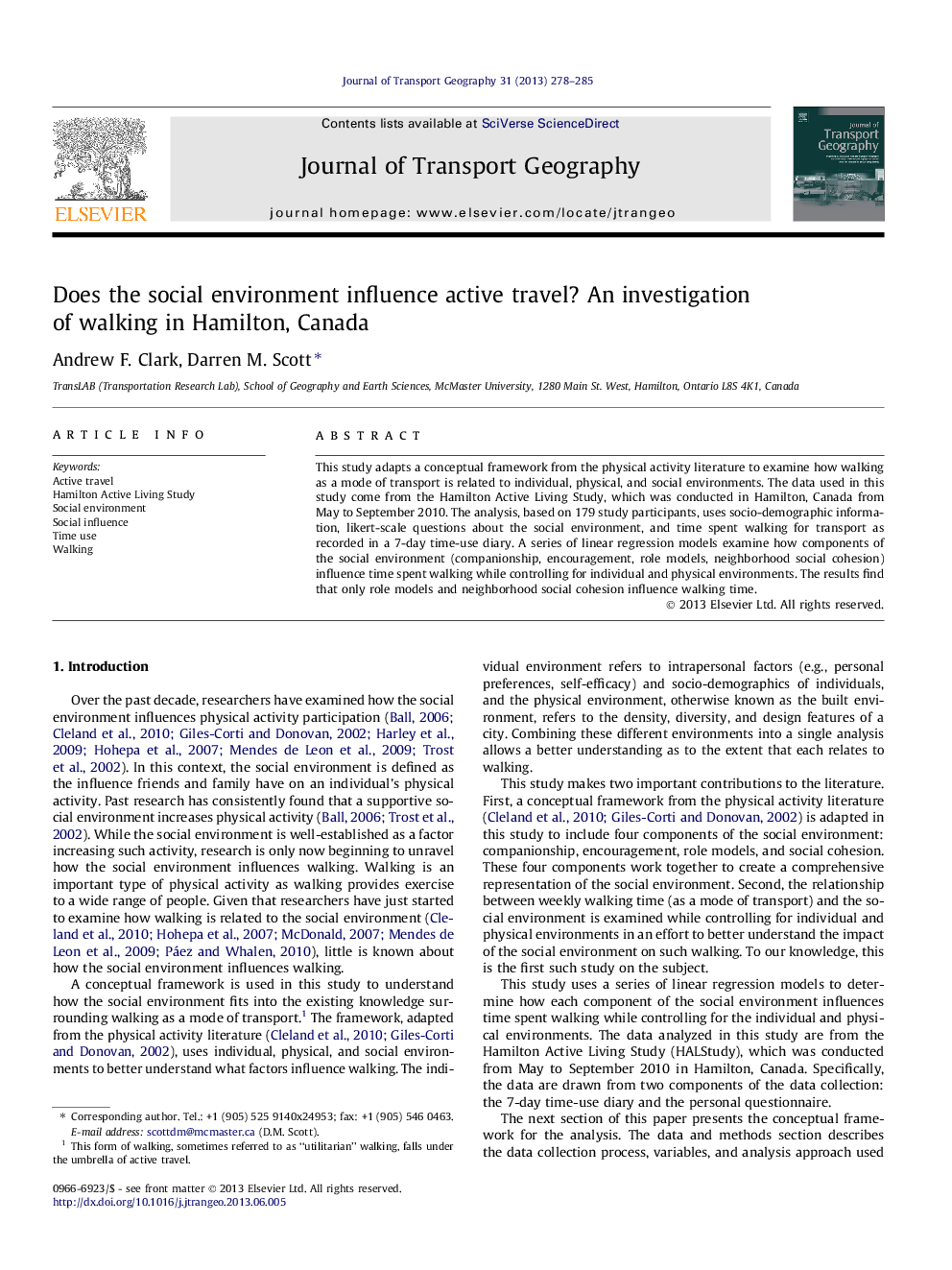| Article ID | Journal | Published Year | Pages | File Type |
|---|---|---|---|---|
| 7486499 | Journal of Transport Geography | 2013 | 8 Pages |
Abstract
This study adapts a conceptual framework from the physical activity literature to examine how walking as a mode of transport is related to individual, physical, and social environments. The data used in this study come from the Hamilton Active Living Study, which was conducted in Hamilton, Canada from May to September 2010. The analysis, based on 179 study participants, uses socio-demographic information, likert-scale questions about the social environment, and time spent walking for transport as recorded in a 7-day time-use diary. A series of linear regression models examine how components of the social environment (companionship, encouragement, role models, neighborhood social cohesion) influence time spent walking while controlling for individual and physical environments. The results find that only role models and neighborhood social cohesion influence walking time.
Related Topics
Life Sciences
Environmental Science
Environmental Science (General)
Authors
Andrew F. Clark, Darren M. Scott,
